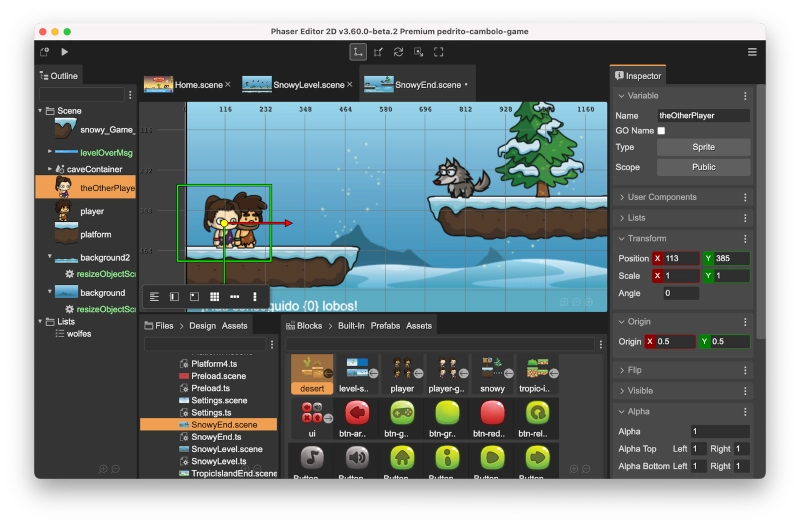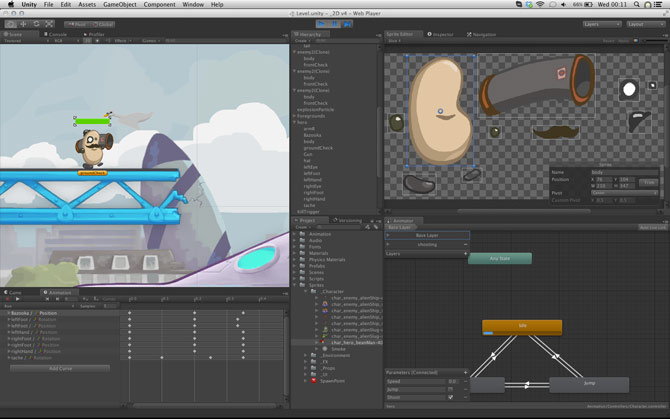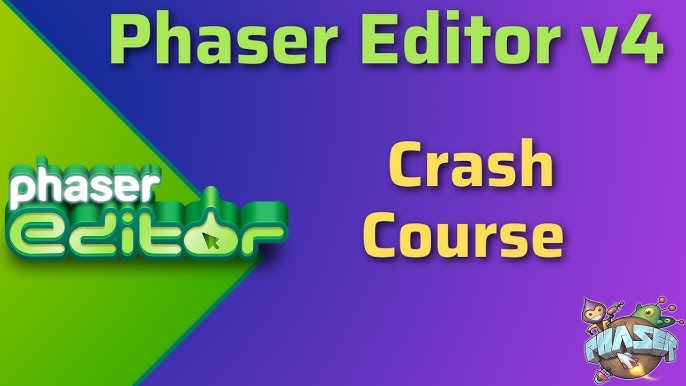The Evolution of Web Game Development: Phaser Editor’s Landmark Update
The world of web-based game development is in a constant state of flux, driven by advancements in browser capabilities, JavaScript performance, and the tooling that empowers creators. For years, the Phaser framework has been a cornerstone of this ecosystem, enabling developers to build rich, interactive 2D games that run anywhere. However, a powerful framework is only one part of the equation; the development environment itself plays a crucial role in productivity and creativity. The latest release of Phaser Editor marks a significant milestone, introducing a suite of enhancements that modernize the entire development experience. This update isn’t just an incremental patch; it’s a forward-looking reimagining of the tool, featuring a completely redesigned user interface, a highly functional new Start Page, and, most importantly, foundational support for the upcoming Phaser v4. This article provides a comprehensive technical breakdown of these new features, exploring how they streamline workflows, unlock new possibilities, and position Phaser Editor as an indispensable tool for the next generation of web games. We’ll dive into practical code examples, discuss best practices, and see how these changes align with broader trends in the web development landscape, touching upon news from the worlds of TypeScript News and modern build tools like Vite News.
A Revamped User Experience: A Modern UI and a Smarter Start
The most immediately noticeable change in the latest Phaser Editor is its complete user interface overhaul. This is more than a simple cosmetic touch-up; it’s a fundamental rethinking of the developer’s interaction with the tool, designed to reduce cognitive load and enhance focus. The new UI draws inspiration from modern IDEs, prioritizing clarity, consistency, and customizability.
The New UI Theme: Clarity Meets Comfort
The new default theme is clean and modern, with a carefully selected color palette that reduces eye strain during long coding sessions. Icons have been redesigned for better legibility, and the layout has been optimized to provide more screen real estate for the most critical windows, like the Scene Editor and the code editor. The property inspectors are now more logically grouped, making it easier to find and tweak settings for game objects, components, and animations. This focus on developer ergonomics is a welcome trend, echoing a broader movement seen in tools across the web ecosystem, from code editors to browser dev tools.
The Productivity-Focused Start Page
Beyond aesthetics, the new Start Page acts as a central hub for productivity. Instead of a blank screen, developers are greeted with a dashboard that provides immediate access to recent projects, a curated list of project templates (like “Platformer,” “RPG,” or “Endless Runner”), and direct links to documentation, community forums, and the latest Phaser News. This seemingly small feature significantly streamlines the process of kicking off a new project or jumping back into an existing one. The templates are particularly powerful, providing a well-structured boilerplate that adheres to modern best practices, often including pre-configured build tools and folder structures.
For example, selecting a “Basic Scene” template might generate the following foundational code, allowing a developer to start building their game logic immediately without the usual setup overhead.
import Phaser from 'phaser';
export default class MainScene extends Phaser.Scene {
constructor() {
// Scene key for referencing this scene
super('MainScene');
}
preload() {
// Load assets here
this.load.image('logo', 'assets/phaser-logo.png');
}
create() {
// Create game objects and set up the scene
const logo = this.add.image(400, 300, 'logo');
this.tweens.add({
targets: logo,
y: 450,
duration: 2000,
ease: 'Power2',
yoyo: true,
loop: -1
});
}
update() {
// Game loop logic goes here
}
}
Embracing the Future: Full Support for Phaser 4

The headline feature of this release is undoubtedly its built-in support for the next major version of the framework, Phaser 4. While Phaser 3 remains a powerful and stable choice, Phaser 4 represents a significant architectural evolution, designed with modern JavaScript, TypeScript, and performance in mind. Phaser Editor’s proactive support ensures that developers can begin experimenting with and building for the future today.
What Phaser 4 Brings to the Table
Phaser 4 is being re-architected from the ground up to be more modular and tree-shakeable. This means that when you use a modern bundler like Vite or Webpack, your final game bundle will only include the parts of the framework you actually use, resulting in smaller file sizes and faster load times. This is a critical advancement for web games, where initial load time is paramount. Furthermore, its API is being designed to be even more TypeScript-friendly, providing superior autocompletion and type safety out of the box. This aligns perfectly with the industry-wide shift towards TypeScript for large-scale application development, a trend reflected in the latest Angular News and Vue.js News.
Authoring a Phaser 4 Scene in the New Editor
The editor seamlessly handles the new project structures and API changes of Phaser 4. The Scene Editor, Asset Pack tool, and code generators have all been updated. For instance, creating a new scene in a Phaser 4 project might generate code that leverages its new, more explicit API. The following example illustrates a hypothetical Phaser 4 scene, showcasing a slightly different structure that the new editor would manage automatically.
// Note: This is a hypothetical example of a Phaser 4 API
import { Scene, GameObjects } from 'phaser4';
export class PlayScene extends Scene {
private player: GameObjects.Sprite;
constructor() {
super({ key: 'PlayScene' });
}
preload() {
this.load.image('player', 'assets/sprites/player.png');
this.load.atlas('items', 'assets/atlas/items.png', 'assets/atlas/items.json');
}
create() {
// Phaser 4 might offer more descriptive factory methods
this.player = this.add.sprite(100, 450, 'player');
// Example of a potentially new, more robust physics integration
this.physics.add.existing(this.player);
this.player.body.setCollideWorldBounds(true);
console.log('PlayScene has been created!');
}
update(time: number, delta: number) {
// Handle player input and other game logic
// The delta time is passed directly, encouraging frame-rate independent logic
}
}
The editor’s visual tools are fully aware of these new APIs. When you drag a sprite into the Scene Editor, the generated code will use the correct Phaser 4 syntax. This abstraction layer is invaluable, as it allows developers to focus on game design and logic rather than getting bogged down in migration details. This mirrors the goals of other game engine ecosystems, as seen in the latest Three.js News and Babylon.js News, where tooling is key to adoption.
Advanced Workflows and Modern Tooling Integration
This update goes beyond core features to embrace modern web development workflows. It recognizes that game development doesn’t happen in a vacuum and must integrate with the broader ecosystem of build tools, version control, and architectural patterns.
A Component-Based Architecture Approach
Modern game and application development, from React News to game engines like Unity, heavily favors a component-based architecture. This pattern involves creating small, reusable, and independent pieces of logic (components) that can be attached to game objects to define their behavior. The new Phaser Editor provides enhanced support for this workflow. You can now easily create User Components as separate files and attach them to objects directly within the Inspector panel. This promotes cleaner, more modular, and maintainable code.
Consider a reusable `HealthComponent` that can be attached to any player or enemy sprite. The editor makes managing this pattern trivial.

import Phaser from 'phaser';
export default class HealthComponent {
private gameObject: Phaser.GameObjects.Sprite;
private maxHealth: number;
private currentHealth: number;
constructor(gameObject: Phaser.GameObjects.Sprite, maxHealth: number = 100) {
this.gameObject = gameObject;
this.maxHealth = maxHealth;
this.currentHealth = this.maxHealth;
// Attach this component's logic to the parent game object
this.gameObject.setData('health', this);
}
takeDamage(amount: number) {
this.currentHealth = Phaser.Math.Clamp(this.currentHealth - amount, 0, this.maxHealth);
console.log(`${this.gameObject.texture.key} took ${amount} damage. Health is now ${this.currentHealth}`);
if (this.currentHealth === 0) {
this.die();
}
}
private die() {
// Add a visual effect and then destroy the game object
this.gameObject.setTint(0xff0000);
this.gameObject.scene.time.delayedCall(250, () => {
this.gameObject.destroy();
});
}
}
In the editor, you could create a script file with this code, then on any sprite’s properties, add this “User Component” and even set the `maxHealth` property directly from the Inspector.
Seamless Integration with Vite, Webpack, and More
The editor now has first-class support for modern JavaScript build tools. Project templates can be initialized with pre-configured `vite.config.js` or `webpack.config.js` files. This is a game-changer for development velocity. It enables features like Hot Module Replacement (HMR), which allows you to see code changes reflected in your running game instantly without a full page reload. This rapid feedback loop is something developers familiar with the latest Next.js News or Svelte News have come to expect, and its arrival in the Phaser ecosystem is a massive productivity boost. The latest Node.js News often highlights the performance of these tools, and Phaser Editor now lets game developers tap into that power directly.
Best Practices and Performance Optimization
A great tool not only enables development but also encourages best practices. The new Phaser Editor includes features and workflows designed to help you build more optimized and robust games.
Efficient Asset Management

The Asset Pack Editor is a core feature that helps you organize all your game’s assets (images, audio, atlases) into JSON files. The latest version improves this tool by making it easier to manage multiple packs for different levels or sections of your game. This allows for lazy loading, where you only load the assets needed for the current scene, drastically reducing initial load times and memory usage. This is a critical optimization technique for web games targeting a wide range of devices.
Profiling and Debugging
While Phaser Editor doesn’t include its own profiler, its tight integration with the browser and modern build tools makes debugging easier. The generated code is clean, human-readable, and includes source maps by default when using a dev server like Vite. This means you can set breakpoints and inspect variables in your original TypeScript or ES6 code directly within your browser’s developer tools. For performance, you can leverage the browser’s built-in performance profiler to identify bottlenecks in your `update` loop or rendering process, a skill essential for any serious game developer.
Common Pitfalls to Avoid
- Overusing Large Textures: Use texture atlases whenever possible. The editor’s Texture Packer integration makes this easy. It combines multiple small images into a single large one, reducing the number of draw calls and improving rendering performance.
- Ignoring Scene Lifecycle: Be sure to clean up event listeners, timers, and other resources in a scene’s `shutdown` method to prevent memory leaks when switching between scenes.
- Complex Prefab Hierarchies: While the editor’s Prefab system is powerful for creating reusable objects, deeply nested prefabs can become difficult to manage. Strive for a balance between reusability and simplicity.
Conclusion: A New Era for Phaser Development
The latest release of Phaser Editor is a landmark achievement for the Phaser community. By introducing a polished, modern user interface, it dramatically improves the day-to-day development experience. The forward-looking support for Phaser 4 provides a clear and accessible pathway to the future of the framework, allowing developers to build with next-generation technology today. Finally, its deep integration with modern web development tools and its encouragement of best practices like component-based architecture and efficient asset management elevate it from a simple scene builder to a comprehensive, professional-grade game development environment. For anyone serious about creating 2D games for the web, whether a hobbyist or a seasoned professional, exploring the new Phaser Editor is not just recommended—it’s essential. The future of Phaser development is here, and it’s more productive, powerful, and enjoyable than ever before.

